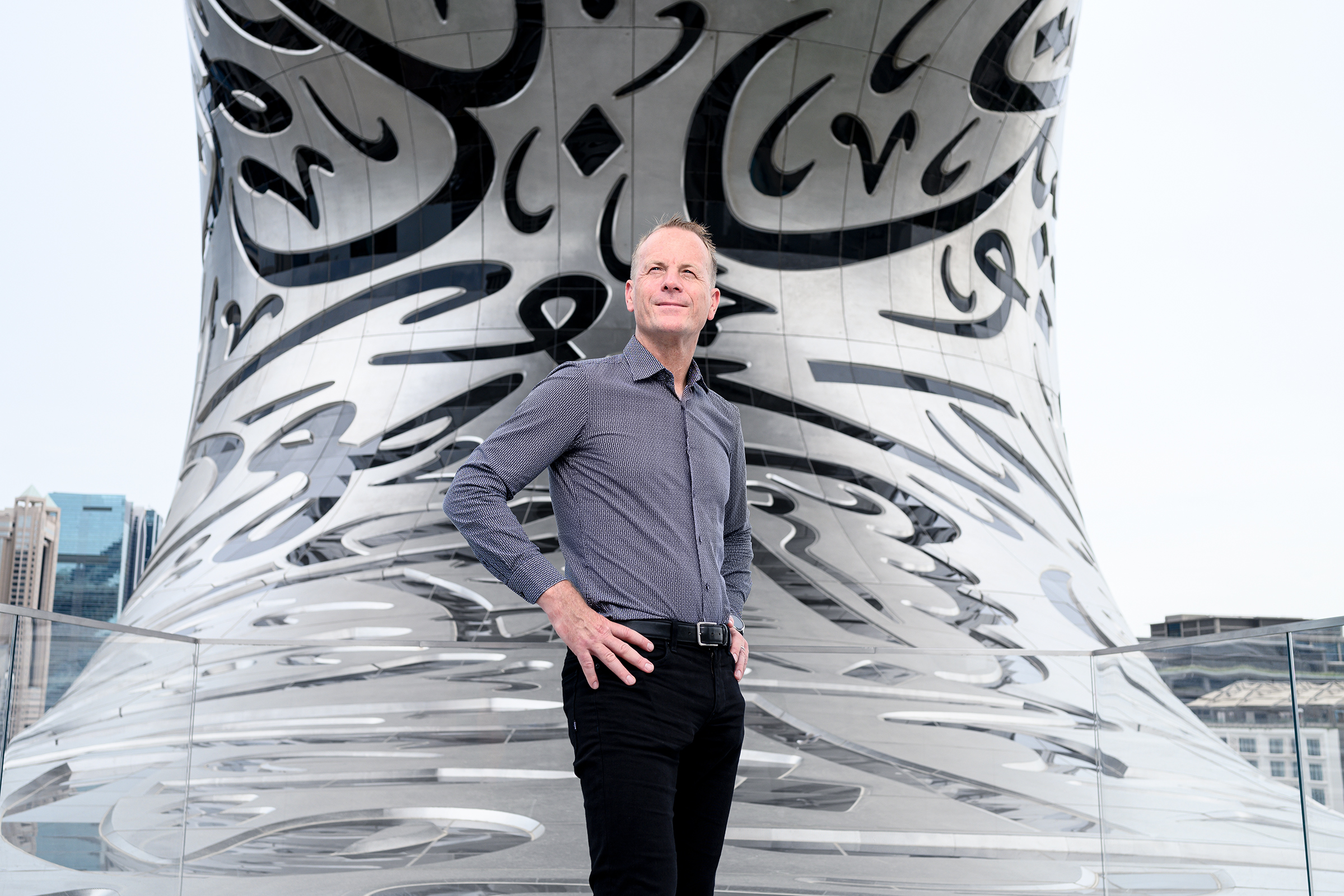The shimmering torus-shaped Museum of the Future in Dubai is covered in Arabic calligraphy and is supported not by the traditional columns but by a steel diagrid, with a facade of 1,024 steel panels. The aviation industry provided inspiration for the technology needed to create the exterior that was developed using learning algorithms. “All the parameters structurally were put into a program, and eventually it learned to create this shape,” says architect Shaun Killa.
Opened in February 2022, the building is an iconic addition to Dubai’s already dramatic skyline, which includes the sail–shaped Burj Al Arab and the Burj Khalifa, the tallest building in the world. These modern, globally recognizable structures have made a name for Dubai’s architecture, but the story of Dubai’s urban landscape goes back much further. “Often the story is that since the 2000s it’s been a place of gleaming skyscrapers,” says architect and writer Todd Reisz, author of Showpiece City: How Architecture Made Dubai.

But the creative fusion seen in the architecture of structures like Killa’s Museum of the Future goes deeper. “I think what has had the most influence on the city is the fact that it’s an entrepôt, a port city,” says Reisz. “It’s a place of exchange and in–betweenness, where not only things and people come in and out, but so do ideas.” That exchange of ideas has led to some of the world’s most ambitious architectural projects—in which Killa has played an outsize role.
Killa first arrived in Dubai from South Africa in 1998, joining architecture firm Atkins, where he worked on the Burj Al Arab—one of Dubai’s most famous buildings, which sits on an artificial island and is shaped like the sail of a yacht. “For an architect coming from Cape Town, the scale of the buildings was so much bigger,” Killa says of Dubai. “If you’re used to smaller projects, it’s quite a challenge to overcome that scale.” Killa went on to work on other major projects in Dubai such as the Dubai Opera, the Address Boulevard, and the Almas Tower, the tallest building in Dubai at the time.
Killa launched his own architecture studio, Killa Design, in 2015, with a desire to make futuristic buildings that combine engineering innovation and technology. Sustainability is also a driving force. For the Bahrain World Trade Center (BWTC), completed in 2008, Killa worked with wind–tunnel and bridge specialists to create a building that is made up of two wing-shaped structures with three 30-m wind turbines suspended between them. The structures funnel wind onto the turbines, which generate up to 15% of the building’s power.
Killa has helped advance architectural innovation in Dubai through his “challenging designs and to demonstrate the capacity to construct them using the latest technologies in the market,” says Georges Kachaamy, director of the Center for Research, Innovation, and Design at the American University in Dubai.
Killa also sees the importance of focusing on the livability of buildings and cities, and creating more cyclable and walkable areas. “There is a strong emphasis on creating a better place to live, with greater diversity,” he says.
With its unusual facade, the Museum of the Future, located in Dubai’s financial district, features frequently on Instagram posts. And like the city itself, it has become a place of exchange—an outsize space where people gather, marvel, and commune. “That enjoyment that I saw people having really filled me with something that was very special,” Killa says of the public reception to the museum. “The building has now been passed to them.”
More Must-Reads from TIME
- Cybersecurity Experts Are Sounding the Alarm on DOGE
- Meet the 2025 Women of the Year
- The Harsh Truth About Disability Inclusion
- Why Do More Young Adults Have Cancer?
- Colman Domingo Leads With Radical Love
- How to Get Better at Doing Things Alone
- Michelle Zauner Stares Down the Darkness
Contact us at letters@time.com